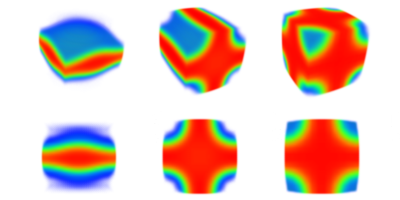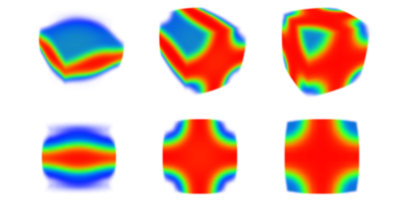New Shape to Nuclear Pasta
A core-collapse supernova is the last stage of life of a massive star. In the dying star, matter is compressed to densities exceeding the density of atomic nuclei and exposed to extreme temperatures and pressures. It has been proposed that, at a certain stage of the collapse, matter self-organizes into what is known as “nuclear pasta,” a collection of bizarre structures, such as rods, slabs, and cylindrical and spherical holes (bubbles), which may constitute – of the inner core of the collapsing star.
Writing in Physical Review Letters, Helena Pais and Jirina Stone develop a fully self-consistent microscopic theory that describes the formation of nuclear pasta as the density increases. Their model predicts all the structures identified in previous studies, and finds evidence for a never-before-seen formation with a “cross-rod” shape.
The authors describe nuclear pasta as belonging to the general category of frustrated matter, which has been identified in other systems such as soft solids, ferromagnets, glasses, and biological materials. Frustration occurs when multiple competing forces cannot find a balance within the symmetry of the system, resulting in an unstable system easily driven by fluctuations between multiple degenerate ground states. For supernova matter, such competing forces are nuclear attraction and Coulomb repulsion.
The formation of nuclear pasta is likely to have profound consequences for neutrino transport. Since neutrinos are supposed to play a crucial role in a supernova explosion, the model proposed by the authors may contribute towards a more realistic description of the dynamics of a collapsing star. – Matteo Rini





